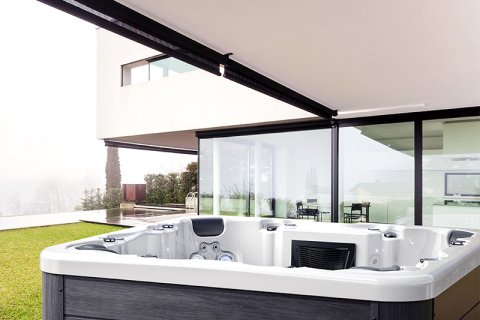
- Home
- >
News
If an outdoor spa hot tub is used frequently, especially when used by multiple people, the pollutants in the water will increase rapidly and the rate of ozone consumption will also increase. In this case, it is recommended to refill the spa hot tub with ozone every day.
On December 31, 1979, the U.S. Consumer Product Safety Commission (CPSC) issued Notice No. 79-071. The notice clearly warned that hot tub water temperatures reaching or exceeding 106°F (about 41°C) could cause serious health problems, especially heat stroke.
The main component of vinegar is acetic acid (acetic acid), which is usually a 5% concentration in water. Acetic acid is somewhat acidic, which means that it can effectively clean the surface of outdoor spa hot tubs by neutralizing alkaline substances or dissolving mineral accumulation.
In general, it is necessary to test the outdoor whirlpool hot tub water quality at least once a week. This applies to most whirlpool hot tubs for home and private use. Testing once a week can help detect water quality problems such as high or low pH, insufficient chlorine content, etc. in time.
Most outdoor hot tub covers have a very limited weight capacity, usually between 50 and 100 pounds (about 23 to 45 kilograms). This means that they can withstand some minor pressure, such as the weight of leaves, snow or rain, but are not suitable for adults or heavy objects to sit directly on them.
Although there is a possibility of virus transmission, it does not mean that it will definitely spread in large quantities in the water. In fact, the risk of herpes transmission in an outdoor whirlpool hot tub is not high. The key is whether there is an opportunity for direct contact with an infected person.
during the rainy season or when leaves fall a lot, covering the whirlpool spa hot tub can effectively prevent water contamination. In the dryer climate and warmer seasons, if the tub is not used for a long time, keeping the lid open can help ventilate and prevent bacteria from growing.
if an exterior hot tub is equipped with a 3-horsepower pump, the pump can support up to 10-12 spa jets, and each jet can provide enough water flow for a moderate intensity massage. For those who want a strong spa effect, a 4-5 horsepower pump can be selected. Such a system can not only support more jets, but also provide a stronger massage effect.
Although salt water can help improve skin problems, it may cause mild irritation for some people with sensitive skin, especially those who are allergic to salt ingredients. In addition, high concentrations of salt water may make the skin feel dry, which may not be friendly to some people.
A hot tub spa cover lifter is a mechanical device used to assist in opening and closing a hot tub spa cover. Generally speaking, hot tub spa covers are made of heavy foam materials to ensure good insulation and safety. This makes the weight of the cover sometimes reach tens of kilograms, especially when it is wet, the weight of the cover will increase further.
Large freestanding hot tubs Large freestanding spa bathtubs are suitable for families with spacious bathrooms who want the ultimate in comfort and relaxation. Large freestanding spa bathtubs are typically 70 to 75 inches long, 32 to 40 inches wide, and 28 to 36 inches high.
If the outdoor whirlpool hot tub water itself contains a large amount of minerals, especially alkaline substances such as calcium carbonate, the use of ozone may accelerate the precipitation reaction of these minerals, resulting in an increase in pH.












